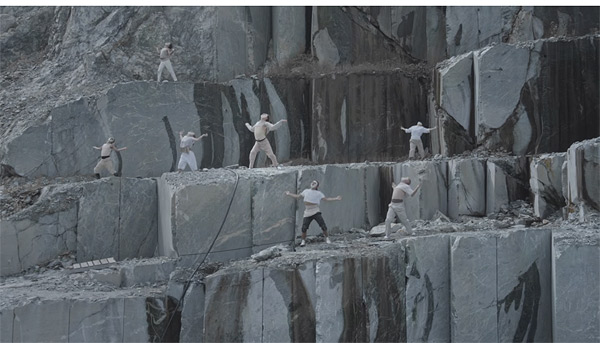After a bizarre series of events this weekend, the days when the presidential campaign was mainly concerned with the size of Donald Trump’s hands and Hillary Clinton’s “damn emails” might now have to be reclassified as the “normal” part of the election season.
Here’s a brief recap of one of the most densely strange weekends in American political history.
Things started to go off the rails on Friday, when Clinton, attending the funeral of another former first lady, Nancy Reagan, offered up a startlingly inaccurate account of “how difficult it was for people to talk about HIV/AIDS back in the 1980s” until a national conversation finally began “because of both President and Mrs. Reagan — in particular Mrs. Reagan.”
Clinton, who is trying to take credit for the most popular parts of her husband’s presidency and avoid blame for its failures, went on to credit Nancy Reagan for “very effective, low-key advocacy” that “penetrated the public conscience, and people began to say, ‘Hey, we have to do something about this too.’”
Among many others, Michael Specter, who covered the AIDS epidemic for the Washington Post, pointed out in the New Yorker that this was not only completely untrue, but bafflingly so:
President Reagan’s first speech on the subject wasn’t until May 31, 1987. By then, more than twenty-five thousand people, the majority of them gay men, had died in the United States. His administration ridiculed people with AIDS — his spokesman, Larry Speakes, made jokes about them at press conferences — and while I do think it rude to speak ill of the dead, particularly on the day of a funeral, this issue cannot be ignored. Nancy Reagan refused to act in any way in 1985 to help her friend Rock Hudson when he was in Paris dying of AIDS. (Last year, BuzzFeed published documents that make this clear.)
Under pressure from activists with a better grasp on the reality of how the Reagans actually did the opposite of what Clinton said, she issued a correction later in the afternoon, in which she said she “misspoke,” somehow confusing Nancy Reagan’s advocacy, as a private citizen, for stem-cell research and the need to find a cure for Alzheimer’s disease after it afflicted her husband, with her silence on AIDS when she lived in the White House.
Normally, Clinton could have been expected to be pressed much harder to explain how she came to say something so blatantly untrue — as she was eight years ago, when she “misspoke” by claiming to have been under sniper fire on a visit to postwar Bosnia — but then protesters in Chicago managed to shut down a rally for Trump on Friday night and attention veered back to the increasing threat of violence at his campaign events.
After Trump decided not to attend that rally, the event shifted into something unpredictable, as protesters, many of them young and black, celebrated inside the hall by singing Kendrick Lamar’s “Alright,” and angry Trump supporters, many older and white, began to file out. There were some scuffles between the two groups, and heated words were exchanged. Up on the abandoned podium, one of the protesters, Jedidiah Brown, ripped up posters for the candidate and was dragged away by security.
One of the demonstrators, Michael Joseph Garza, described a remarkable scene that followed the rally. Garza wrote on Facebook that he and some of the other protesters tried to defuse the tension between them and the candidate’s fans by forming small channels in the crowd to allow them to leave.
“As people are walking out we’re saying things like ‘Bye racists,’ ‘You lost. Please just go home now,’” Garza wrote. Then he spotted an older woman wearing a Trump campaign T-shirt. “This woman is a human being and although I don’t share her views,” he recalled thinking, “I start yelling, ‘I will respect my elders. Please. Leave.’” An image shared later on Twitter by a Chicago Tribune photographer, E. Jason Wambsgans, shows what happened next. As Garza gestured with his hand for the woman to use the path through the crowd that he and the other protesters had cleared, she looked into his eyes and, in his account, said, “Go? Back in my day, you know what we did?” She then raised her arm in a Nazi salute.
The photograph of the woman, Birgitt Peterson, an immigrant from Germany who has been a Republican convention delegate in the past, quickly spread across social networks where it was used as ammunition against Trump supporters who deny that the candidate’s rhetoric has energized white nationalists.
Peterson, for her part, denied in an interview with the New York Times that she was racist in any way, offering the confused explanation that she was goaded into the gesture by the protesters and was only trying to show young people who compared Trump to Hitler the proper way to do a Nazi salute. “If you want to do it right, you do it right,” she said.
That explanation was undercut somewhat by the fact that she later admitted to the Chicago Tribune that she did say, “Hail to the German Reich,” in German, as she made the salute.
Saturday morning dawned with one of Trump’s most die-hard supporters, his eldest son, Donald Trump Jr., latching onto an internet conspiracy theory to try to distance the campaign from the Nazi salute. Relying on the impeccable research skills of the actor James Woods, Trump the younger shared a false rumor that the woman who gave the salute had been identified as Portia Boulger, the social media director of Women for Bernie Sanders.

A screenshot from the Twitter account of Donald J. Trump Jr.
Twitter
Even after Boulger proved that she was not in Chicago on Friday night, and no longer has the hair style that made her look somewhat similar to the Trump supporter who freely admitted making the salute, the candidate’s son continued to spread the false accusation that the image had been “staged” by the Sanders campaign to tarnish his father’s supporters. He eventually deleted his tweets, but not before they had been widely shared, and he posted no explanation or apology. Woods, for his part, later issued a correction of sorts, but left up his original tweet asserting the salute was made by an “agitator/operative” for Sanders, a falsehood that’s now been shared more than 4,600 times on the social network.
Later in the morning, the tension was palpable as Trump returned to the campaign trail in Dayton, Ohio, and a young protester tried to vault onto the podium before being restrained as Secret Service agents surrounded the candidate.
That incident had a bizarre coda when Trump later asserted that the protester, Tommy DiMassimo, a student at Wright State University in Dayton, “has ties to ISIS.”
Trump’s evidence appeared to be nothing more than a hoax video posted online that mixed DiMassimo’s own video of himself at a student protest last year with a photo-shopped image of him holding a gun before an Islamist flag, and music taken from a real ISIS video. That video was uploaded to YouTube after the incident on Saturday by someone who claimed, falsely, to have copied it from DiMassimo’s account.
Unfortunately for the Trump campaign, genuine video soon surfaced online of the candidate’s supporters leaving a rally in Cincinnati on Saturday, shouting at protesters: “Go to Auschwitz!” and “Go back to Africa!”
With attention once again so firmly placed on the volatile situation at Trump rallies, Clinton then committed another unforced error at one of her own campaign events on Saturday in St. Louis.
Just before 1 p.m., Amy Chozick of the New York Times reported on Twitter that Clinton suggested that her advocacy for universal health insurance in the 1990s came well before that of Bernie Sanders.
“I always get a little chuckle when I hear my opponent talk about doing it,” she told supporters. “Well, I don’t know where he was when I was trying to get health care in ’93 and ’94,” she added sarcastically.
Just four minutes after Chozick’s tweet of the remarks, the rapid-response director for the Sanders campaign, Mike Casca, supplied a photograph and video of Sanders standing with Clinton at an event in 1993 to promote health insurance reform.
A few minutes after that, the Sanders campaign also produced a signed and dated photograph of the two of them together from that year, inscribed by Clinton, “To Bernie Sanders, with thanks for your commitment to real health care access for all Americans.”
By the end of the day, a remix of the video of the two events was posted on Twitter and shared tens of thousands of times.
Sunday started off with Trump responding to widespread calls for him to tone down his rhetoric by using Twitter to step it up instead: Embracing the discredited theory that supporters of Bernie Sanders are being dispatched to disrupt his rallies, he threatened to send his followers to the Vermont senator’s events.
A short time later, Chuck Todd of NBC confronted Trump with the fact that the video of the protester in Dayton he had based his ISIS accusation on, and shared with his millions of Twitter followers, was fake. Even so, Trump refused to accept that the video had not been made by the protester himself. “All we did was put out what he had on his internet,” Trump said. Informed by Todd that there was simply no evidence that the video was genuine, and no one in law enforcement intended to arrest DiMassimo based on the hoax, Trump replied, in what could be the new motto for his campaign, “What do I know about it? All I know is what’s on the internet.”
The post Was This the Strangest Weekend in American Political History? appeared first on The Intercept.











































































